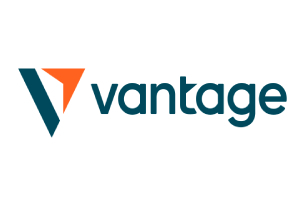Don’t invest unless you’re prepared to lose all the money you invest. This is a high-risk investment and you are unlikely to be protected if something goes wrong. Take 2 minutes to learn more
Staking cryptocurrency might sound complex, but it’s far simpler than mining or trading. Whether you’re a newcomer or an experienced investor, utilizing centralized exchanges and staking platforms makes entering the world of staking easier than ever. This guide will walk you through the fundamentals of cryptocurrency staking, the platforms to use, and the top cryptocurrencies for lucrative staking opportunities.

Understanding Staking
Cryptocurrency staking involves investors earning additional cryptocurrency by participating in validation, particularly on “Proof of Stake” (PoS) blockchains. In a PoS blockchain, active users contribute a designated amount of cryptocurrency (“stake”) to be eligible for block validation. The blockchain system randomly selects a staker to validate a block and rewards them with additional cryptocurrency.
With the surge in staking popularity, the required stake has increased, but the process remains straightforward. Staking is akin to earning interest on traditional investments, but instead of using bonds or bank accounts, you utilize an exchange.
During the staking period, the network employs your locked cryptocurrency to validate transactions and maintain the blockchain’s security. As a reward for this service, stakers receive more cryptocurrency, known as “staking rewards.”
Staking provides an eco-friendly and energy-efficient alternative to the energy-intensive validation processes on Proof of Work (PoW) chains, as seen with Bitcoin. Staking allows you to generate interest income from your cryptocurrency holdings without having to trade or mine.
| Name | Ticker | Best Rate | Exchange |
|---|---|---|---|
| Ethereum | ETH | 8.00% | Nexo |
| Solana | SOL | 8.00% | Nexo, Stake.fish |
| Cardano | ADA | 8.00% | Nexo |
| Avalanche | AVAX | 8.00% | Nexo |
Proof of Stake vs. Proof of Work
Staking is exclusively possible on blockchains employing the Proof of Stake (PoS) consensus algorithm. This mechanism allows network participants to collectively determine which transactions should be validated and included in newly created blocks. It is a greener alternative to PoW mining, as PoS consumes significantly less energy.
How Crypto Staking Works
Staking involves holding a certain amount of cryptocurrency in a designated digital wallet and locking it for a predetermined duration. This process uses your resources to maintain the blockchain’s stability and security, and it helps with transaction verification longevity. As you stake, the network selects validators from among participants, and the more cryptocurrency you commit, the higher your chances of being chosen.
Upon each block addition, the blockchain generates new coins and distributes them as rewards to the block’s validator. These rewards are typically distributed in the same cryptocurrency used for staking.
Staking rewards fluctuate based on factors such as the staked amount, the lock-up period, and the cryptocurrency’s demand.
Methods of Staking
There are four primary methods of staking:
1. Delegation: A common choice for smaller crypto investors who do not wish to operate a validator, this approach involves delegating your coins to a validator, such as an exchange or staking platform. In return, you receive a share of the staking rewards validator earned.
2. Pooled Staking: Pooled staking is similar to delegation but combines multiple validators into a pool, leading to higher staking rewards. Pooled staking is more advanced than delegation but can be more lucrative.
3. Liquid Staking: Liquid staking services, such as Lido, allow token holders to receive staking rewards while retaining access to their tokens, increasing flexibility. However, this method is not recommended for absolute beginners.
4. Validator Nodes: This is the most advanced staking method, where you run your staking node, requiring technical expertise and substantial capital. Becoming a validator offers greater rewards and control within some blockchains but is not suited for beginners.
Popular Cryptocurrencies for Staking
The following cryptocurrencies are popular choices for staking, based on their project strength, annual percentage yield (APY), and market liquidity:

1. Ethereum 2.0 (ETH2): Ethereum transitioned to PoS in September 2022, requiring 32 ETH tokens and a lock-up of 365 days for validator nodes. Delegator pools offer a more accessible option for beginners.





Where to Begin Staking Cryptocurrency
You can stake cryptocurrencies on:
1. Centralized Exchanges (CEX): Leading cryptocurrency exchanges like Binance and Coinbase offer user-friendly staking options.
2. Staking Platforms: These dedicated platforms focus solely on crypto staking pools, providing a more specialized approach.
3. Hardware Wallets: Staking through offline crypto wallets, such as Ledger or Trezor, allows you to maintain control of your private keys.
How to Stake Cryptocurrency: A Step-by-Step Guide
While the specific steps may vary based on the platform, the initial stages are consistent across all methods. Here’s a general guide:
For All Methods:
1. Choose the cryptocurrency you want to stake by considering factors like APY rewards, minimum stake, and lock-up periods.
2. Decide whether to become a validator or delegate your stake to a validator or staking platform. Validators require technical expertise and substantial capital.
3. Perform due diligence to select a reputable validator, platform, or exchange.
For Centralized Exchanges (CEX):
1. Create an account on your chosen exchange and link your crypto wallet.
2. If you do not already have the cryptocurrency you wish to stake, purchase it from the exchange.
3. Locate the dedicated staking page on the exchange’s website.
4. Enter your staking information, such as the amount and lock-up period.
For Private Staking (Crypto Wallets):
1. Download a software wallet that supports staking, like Exodus or Trust Wallet.
2. Choose a cryptocurrency that supports staking and hold it in your wallet.
3. Initiate staking through the wallet’s interface, calculating potential rewards.
For Delegating (Staking Platforms):
1. Select a staking platform, such as Lido or Stake.fish, and register if required.
2. Access the staking page, choose your preferred cryptocurrency, and connect your wallet.
3. Start the staking process after confirming your stake amount and the reward rate.
Mining vs. Staking
For individual investors, staking is a more environmentally friendly and cost-effective alternative to crypto mining. Ethereum’s shift to PoS, reduced its energy costs by 99%. The table below highlights the key differences between mining and staking in cryptocurrency.
In Conclusion
Cryptocurrency staking presents a simple, eco-friendly, low-cost approach to earning passive income. It does not require energy-intensive hardware or increase your energy bills. Whether new to staking or an experienced investor, choose established cryptocurrencies to minimize risk.
Start with well-known assets like Ethereum or Cardano, conduct thorough research, and exercise caution when staking or investing in cryptocurrency.
For more information on earning money through crypto investments and the latest staking rates, subscribe to our Bitcoin Market Journal newsletter.
Frequently Asked Questions
1. What is staking in cryptocurrency?
Staking involves participating in a proof-of-stake consensus mechanism by holding a specific amount of cryptocurrency in a wallet to support network operations.
2. What are the benefits of staking?
Benefits of staking include earning passive income, low entry barriers, energy efficiency, and contributing to network security.
3. What are the risks involved?
Risks of staking include locked funds, potential slashing in some PoS networks, and market volatility.
4. Can I unstake my coins?
Yes, but it may require waiting until the staking period ends. The conditions for unstaking vary depending on the cryptocurrency.
5. Can you stake Bitcoin?
No, you cannot stake Bitcoin, as it employs a Proof-of-Work consensus mechanism. However, some financial services offer to “stake” your Bitcoin, but this is more akin to lending than true blockchain staking.
You can purchase Lucky Block – Guide, Tips & Insights | Learn 2 Trade here. Buy LBLOCK
Note: Learn2.trade is not a financial advisor. Do your research before investing your funds in any financial asset or presented product or event. We are not responsible for your investing results.
- Broker
- Min Deposit
- Score
- Visit Broker
- Award-winning Cryptocurrency trading platform
- $100 minimum deposit,
- FCA & Cysec regulated
- 20% welcome bonus of upto $10,000
- Minimum deposit $100
- Verify your account before the bonus is credited
- Fund Moneta Markets account with a minimum of $250
- Opt in using the form to claim your 50% deposit bonus
Learn to Trade
Never Miss A Trade Again

Signal Notification
Real-time signal notifications whenever a signal is opened, closes or Updated

Get Alerts
Immediate alerts to your email and mobile phone.

Entry Price Levels
Entry price level for every signal Just choose one of our Top Brokers in the list above to get all this free.



